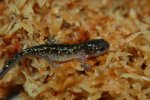JMH
Member
- Joined
- May 28, 2011
- Messages
- 71
- Reaction score
- 4
- Points
- 8
- Location
- Illinois
- Country
- United States
- Display Name
- JMH
I have had a big male A. maculatum for about three years and have gone out every late January and all of February to try and find a female. I have only found males, never a female. But this year I finally found one and a few days later she laid some eggs.
So hopefully I'll get some good ones and maybe get her to breed with my male either next year or the year after. We'll see, I'm just very excited to finally have a pair. Here are a few pictures of the eggs.
Anyone have any advice on keeping the eggs and larvae?
Thanks!
So hopefully I'll get some good ones and maybe get her to breed with my male either next year or the year after. We'll see, I'm just very excited to finally have a pair. Here are a few pictures of the eggs.
Anyone have any advice on keeping the eggs and larvae?
Thanks!

























